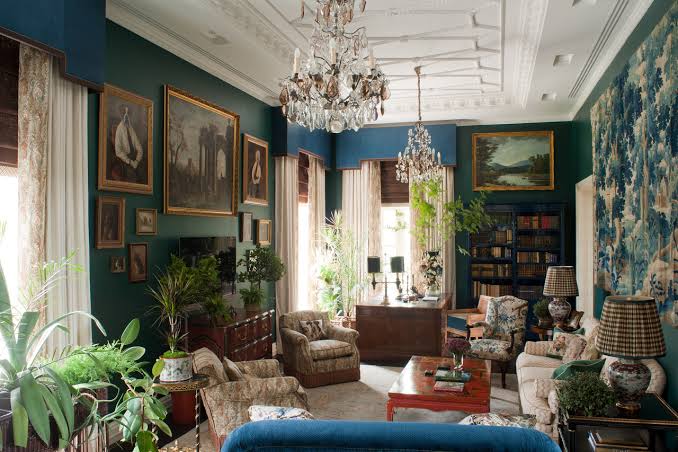Catherine the Great Furniture: Discover Russian Imperial Elegance

Catherine the Great, Empress of Russia from 1762 to 1796, was not only a powerful ruler but also a passionate patron of the arts. Her reign marked a golden age for Russian culture, and one of the most enduring legacies of this period is the opulent furniture that adorned her palaces. This article delves into the world of Catherine the Great’s furniture, exploring its historical context, design elements, and lasting impact on furniture design.
The Historical Context of Catherine the Great’s Reign
Catherine II ascended to the Russian throne in a time of significant political and cultural transformation. Born Sophia Augusta Fredericka in Prussia, she married into the Russian royal family and eventually took the throne after a coup d’état. Her reign is characterized by efforts to modernize Russia, aligning it more closely with Western European Enlightenment ideals.
Under her rule, Russia expanded its territory and influence, but perhaps more importantly, Catherine sought to cultivate a sophisticated cultural identity for her nation. She was an avid collector of art, literature, and scientific instruments, and her patronage extended to architecture and interior design. The furniture commissioned during her reign was not merely functional but served as a statement of power, wealth, and cultured taste.
The Influence of European Styles on Russian Furniture
Catherine the Great was deeply influenced by European art and culture, particularly that of France and England. She admired the elegance of Louis XV and Louis XVI styles and sought to incorporate these elements into Russian design. This period saw the introduction of Rococo and Neoclassical styles into Russian furniture, blending them with traditional Russian motifs.
Artisans from across Europe were invited to Russia to work on various projects. French and German craftsmen played significant roles in shaping the furniture styles of the Russian court. The result was a unique fusion that combined European sophistication with Russian grandeur, giving birth to a distinctive aesthetic that still captivates historians and art lovers today.
Materials and Craftsmanship: A Testament to Luxury
The furniture of Catherine the Great’s era was characterized by the use of luxurious materials. Exotic woods like mahogany, rosewood, and ebony were commonly used. These were often inlaid with intricate marquetry, gilded accents, and adorned with precious metals and stones.
Craftsmanship was of the utmost importance. Artisans paid meticulous attention to detail, ensuring that every piece was a masterpiece. Techniques such as ormolu (gilded bronze) were employed to add opulence. Upholstery featured rich fabrics like silk and velvet, often imported from the finest mills in Europe.
The combination of high-quality materials and exceptional craftsmanship resulted in furniture pieces that were not only beautiful but also durable. Many of these pieces have survived to this day, housed in museums and private collections, serving as a testament to the lavishness of Catherine’s court.
Iconic Pieces from the Hermitage Museum
The Hermitage Museum in St. Petersburg, once the Winter Palace of Catherine the Great, houses some of the most exquisite examples of furniture from her reign. Notable pieces include intricately carved chairs, ornate tables, and grandiose cabinets.
One such piece is the Peacock Clock, an elaborate automaton featuring life-sized gilded bronze peacocks, owls, and roosters. While not furniture in the traditional sense, it exemplifies the luxurious and whimsical tastes of the time. Another remarkable piece is the Tsarina’s Dressing Table, adorned with mother-of-pearl and precious gemstones.
These pieces offer invaluable insights into the aesthetic preferences of Catherine and the craftsmanship of the period. They also highlight the Empress’s desire to create a palace that rivaled those of other European monarchs.
The Role of Furniture in Displaying Power and Influence
In the 18th century, furniture was more than just functional; it was a symbol of status and power. Catherine the Great understood this and used furniture as a means of displaying her wealth and sophistication. The grandeur of the pieces served to impress foreign dignitaries and assert Russia’s place as a cultural powerhouse.
State rooms were meticulously decorated to reflect the importance of the Russian Empire. Furniture arrangements were carefully planned to facilitate political discussions and entertainments. The opulence of these settings played a crucial role in diplomatic relations, subtly conveying messages of strength and prosperity.
The Integration of Russian Motifs and Symbolism
While heavily influenced by European styles, Catherine the Great’s furniture also incorporated Russian motifs and symbolism. Elements like the double-headed eagle, a symbol of the Russian Empire, were commonly featured. Folklore and traditional patterns found their way into the designs, creating a unique blend of East and West.
This integration was a deliberate effort to forge a national identity that was both modern and distinctly Russian. It reflected Catherine’s vision of a Russia that was enlightened yet proud of its heritage. The furniture served as a physical manifestation of this ideal, bridging cultural gaps and fostering a sense of unity.
The Lasting Impact on Furniture Design
The influence of Catherine the Great’s furniture extended beyond her reign. The styles developed during this period set trends that would continue into the 19th century. Russian furniture began to gain recognition in Europe, appreciated for its quality and unique aesthetic.
Contemporary designers often draw inspiration from this era, incorporating elements like gilded accents, elaborate carvings, and rich upholstery into modern pieces. The enduring appeal lies in the perfect balance of luxury and artistry, a combination that continues to captivate audiences.
Collecting and Preserving Catherine the Great Furniture
Today, original pieces from Catherine the Great’s time are highly sought after by collectors and museums. Their rarity and historical significance make them valuable both monetarily and culturally. Preservation efforts are crucial to maintaining these artifacts for future generations.
Restoration experts work meticulously to conserve the materials and craftsmanship of these pieces. Advances in technology have allowed for better preservation methods, ensuring that the furniture remains as close to its original state as possible. Exhibitions around the world showcase these works, allowing the public to appreciate the grandeur of the Russian Imperial era.
Bringing Imperial Elegance into Modern Homes
For those inspired by Catherine the Great’s style, there are ways to incorporate elements of this opulent design into modern interiors. Reproductions and inspired pieces are available, offering the luxurious feel without the hefty price tag of an antique.
Key features to consider include the use of rich materials like velvet and silk, ornate detailing, and a mix of European and Russian motifs. Statement pieces like a gilded mirror or an intricately carved chair can serve as focal points in a room. By blending these elements with contemporary design, one can achieve a sophisticated and timeless aesthetic.
Read More: DecoratorAdvice.com: Your Ultimate Guide to Modern Home Décor Trends
Conclusion: The Enduring Legacy of Catherine the Great’s Furniture
Catherine the Great’s contributions to furniture design are a significant part of her enduring legacy. The pieces commissioned during her reign encapsulate a pivotal moment in Russian history, reflecting the nation’s aspirations and cultural evolution. They stand as remarkable works of art, embodying the elegance and grandeur of the Russian Imperial era.
Whether viewed in a museum or reimagined in modern design, Catherine the Great’s furniture continues to inspire and captivate. It serves as a reminder of the power of art and design in shaping cultural identity and leaving a lasting impact on the world.

